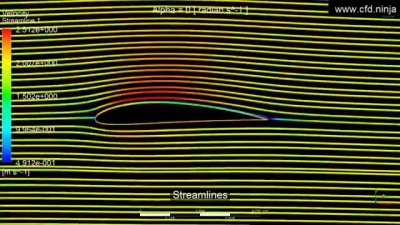Faris Muhammad Jihad - 1706064372
Contents
Profile
Name: Faris Muhammad Jihad
NPM: 1706064372
A mechanical engineering student at the Faculty of Engineering University of Indonesia. Attending the mechanical engineering international program since 2017, involvement of campus activities related to mechanical engineering are through the university robotics clu abd biomedical research group student assistant. Currently taking optional elective course on CFD Application and Jet & Rocket Propulsion, whilst working on the last undergraduate assignment thesis with electro-mechanical research group for a thesis topic in robotics.
Study Summary
CFD Application
CFD Application, or more commonly referred to as Computational Fluid Dynamics is the branch of fluid mechanics that utilize numerical methods and data structures to simulate, analyze, and find solutions for fluid flow applications. Aside for the fundamentals of mathematics and physics, CFD requires the pre-requisites of programming, numerical methods, statistics & data, and fluid systems.
The latest development of CFD Application in the academic and industrial level implements this subject with softwares for simulation and data analysis. Amongst those softwares that is used in the CFD Application course in Mechanical Engineering University of Indonesia are CFDSOF and OpenModelica. Along with the usage of other softwares such as CAD from Solidworks or Autodesk Inventor in order to visually create the external environment of the fluid flow simulation.
This course is of importance for students heading towards many mechanical engineering branches since it is used in all industries that deal with thermo-fluid applications. Such as in the aerospace industry, automotive industry, manufacturing, and so on. Amongst those applications could be simulations for determining input of raw materials into a certain machine to optimize for efficiency, simulations for determining the airfoil of an airplane wing, and more.
CFD Application Tasks
Chapter 3
CHAPTER 3 TURBULENCE MODELLING - QUIZ 1 (Example 3.5):[1]
Chapter 4
CHAPTER 4 FINITE VOLUME METHOD FOR DIFFUSION PROBLEMS Simulation Assignment (Example 4.2 and 4.3):[2]
https://www.youtube.com/watch?v=AbvN-jlnxjU
Final Task (Tugas Besar CFD Application)
Title
Computational Fluid Dynamics Two-Phase Flow Modelling Methods: Literature Review
Introduction
In fluids, two-phase flow is a flow of two phases with the same interfaces in a channel. This could happen in in single-component or multicomponent system, with the possible two-phase flow combinations being: solid-liquid, solid-gas, liquid-vapor, and a combination of the three possible combinations. The way the categorization of two-phase flows are labelled is through the superficial velocity in which the velocity of each phase in the system is used as the parameter.
Currently in the field of Computational Fluid Dynamics, two-phase flow modelling is still ongoing. Several methods that have been proposed have their implementations regarding two-phase flows depending on their constraints and capabilities. In order to improve precision of the modelling of two-phase methods, the proposed methods must be understood, compared, and utilized correctly. This research paper compares those methods and concludes their best implementations. The methods that will be compared in this research paper for the modelling of two-phase flows are: the Volume of Fluid Method, the Level-Set Method, Lattice Boltzmann methods, and Smoothed-particle hydrodynamics.
Methodology
Discussion
Conclusion
Acknowledgement
This research paper was written as a final project for the Application of Computational Fluid Dynamics course in the Mechanical Engineering Department, Faculty of Engineering, University of Indonesia. The author thanks Dr. Ahmad Indra as the advisor and lecturer of the research paper as well as the course, and also thanks the classmates for the educational discussions regarding the research paper and the course topics for the author's learning of the subject.
Reference
https://www.sciencedirect.com/topics/engineering/two-phase-flow

